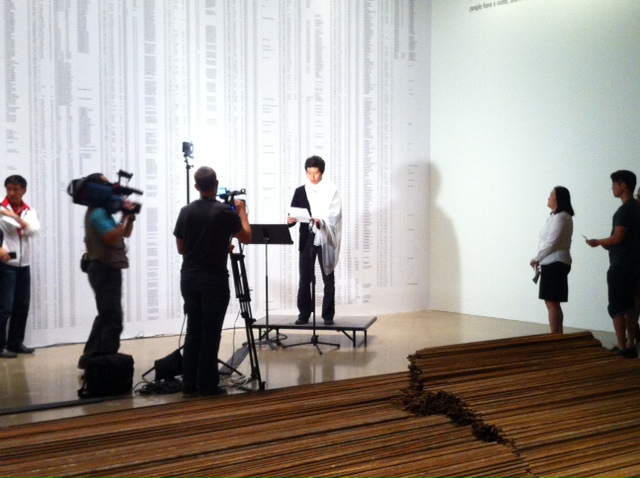You’ve probably visited the Ai Weiwei exhibition by now. If so, you surely felt the impact of the wall of Chinese characters in one room and, on the floor in front of it, the installation of rebar arranged in jagged bas-relief (“Straight”).
The rebar was salvaged from poorly-built schools that collapsed in the 2008 Sichuan earthquake; the wall characters list, by name and other particulars, every one of the 5,200 children who died beneath those schools.
The world only knows these details because Ai Weiwei – and his courageous team of volunteers – did the necessary on-site research, despite government opposition. (Why run those risks? To affirm what they see as a basic human right: to have a name, to be recognized as an individual.)
On August 18, one day after our exhibition opened, the AGO staged an event called “Say Their Names, Remember.” The title tells you the concept: say each name aloud, remember each child. I played a very small role, and I want to try to share with you how moving the performance was – how poignant, sombre, and glorious.
It took four hours, involved almost 300 Chinese-speaking volunteers (from the community and the AGO), and was organized by Bev Carret, the AGO’s manager of Government and Community Relations, and Gein Wong, a community performance artist.
I was there because it also involved some non-Chinese speaking AGO volunteers, who helped in other ways. (For example, I was one of the people who led groups of speakers to and from the room in which the performance was being staged. )
One after another, these hundreds of volunteer readers stepped to the podium, positioned between the wall and the floor installation. Each speaker held his or her own short list of names, and read those names aloud before handing the microphone to the next person in line. Over that long afternoon, while exhibition visitors came and went freely from the room, the performance continued. Every child was named, and honoured.
Most readers were young, in their 20s, though all age groups were represented. Most bowed to the wall in respect, sometimes both before and after reading their list of names. One man performed a careful ritual with flowers as he read, one blossom per child; one young woman had a friend beside her for emotional support. While reading, she turned away twice to regain composure, and afterward she not only bowed to the wall, she kissed her palm and pressed it gently against the nearest names.
Afterwards, we thanked the readers for their participation. They thanked us for the opportunity. We all felt privileged to have been part of it.
